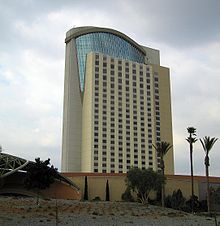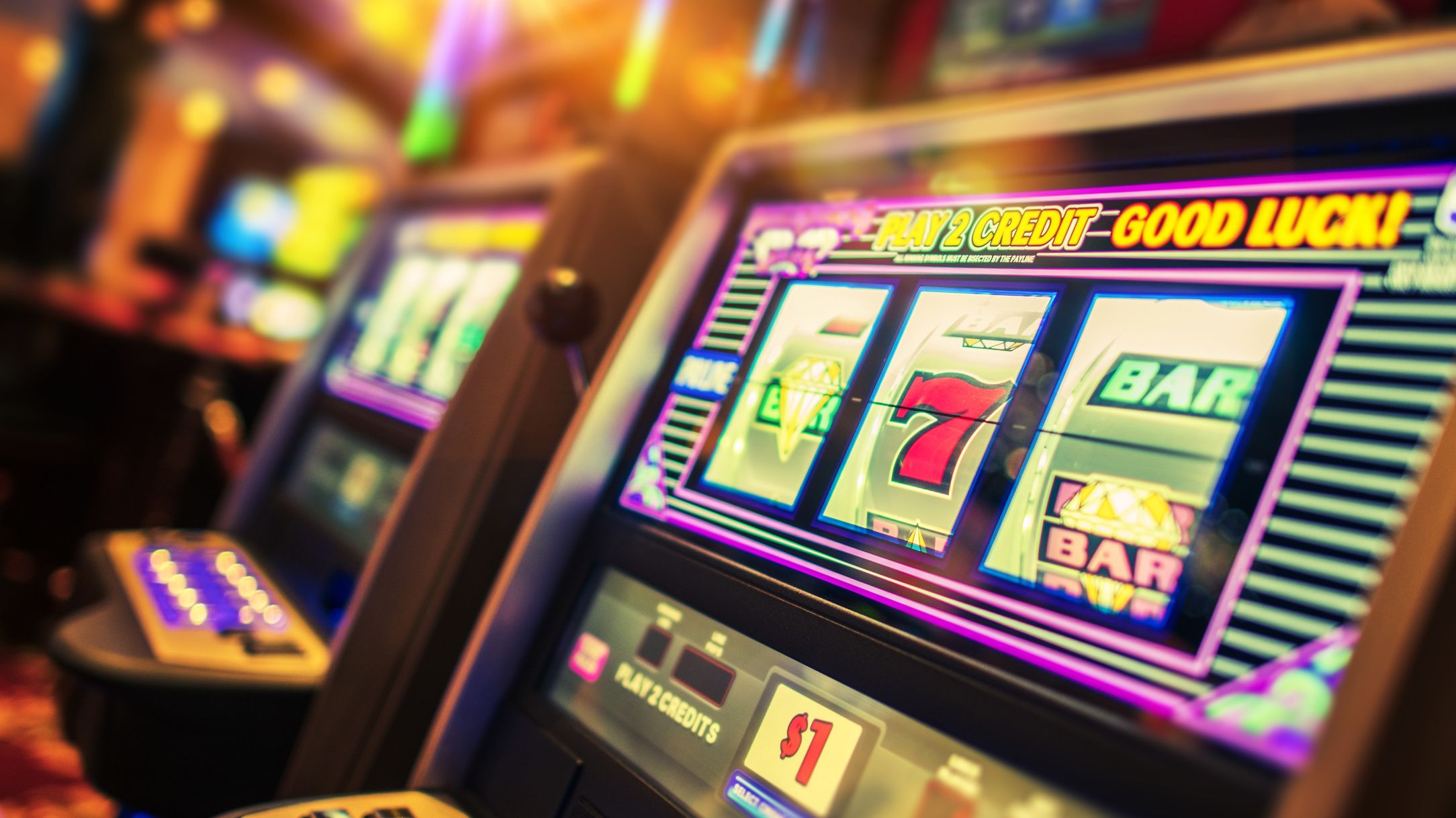Are Casinos Only On Indian Reservations
- Are Casinos Only On Indian Reservations Map
- Are Casinos Only On Indian Reservations Located
- Are Casinos Only On Indian Reservations State
Quechan tribal seal | |
| Total population | |
|---|---|
| 10,089[1] (2010) | |
| Regions with significant populations | |
| Arizona California | |
| Languages | |
| Quechan, English, Spanish | |
| Religion | |
| traditional tribal religion, Christianity | |
| Related ethnic groups | |
| Maricopa, Mojave, KumeyaayYavapai |
43% of American Indian children under the age of 5 are living in poverty. About 40% of on-reservation housing is considered inadequate; 30% of Indian housing is overcrowded and less than 50% of it is connected to a public sewer. Approximately 13% of homes in Indian Country lack safe drinking water. Death rates for members of the Indian Reservations suffering under severe poverty are shockingly. Very few make enough so tribal members make a lot of money. There are 574 federally recognized tribes in 2020. Only about 326 have reservations. Some have casinos. Some are successful. Many don’t make much. Others made bad deals with management an.

The Quechan (or Yuma) (Quechan: Kwtsaan 'those who descended') are an aboriginal Americantribe who live on the Fort Yuma Indian Reservation on the lower Colorado River in Arizona and California just north of the Mexican border. Despite their name, they are not related to the Quechua people of the Andes. Members are enrolled into the Quechan Tribe of the Fort Yuma Indian Reservation. The federally recognized Quechan tribe's main office is located in Winterhaven, California. Its operations and the majority of its reservation land are located in California, United States.
History[edit]
The historic Yuman-speaking people in this region were skilled warriors and active traders, maintaining exchange networks with the Pima in southern Arizona, New Mexico, and with peoples of the Pacific coast.[citation needed]
The first significant contact of the Quechan with Europeans was with the Spanish explorer Juan Bautista de Anza and his party in the winter of 1774. Relations were friendly. On Anza's return from his second trip to Alta California in 1776, the chief of the tribe and three of his men journeyed to Mexico City to petition the Viceroy of New Spain for the establishment of a mission. The chief Palma and his three companions were baptized in Mexico City on February 13, 1777. Palma was given the Spanish baptismal name Salvador Carlos Antonio.[citation needed]

Spanish settlement among the Quechan did not go smoothly; the tribe rebelled from July 17–19, 1781 and killed four priests and thirty soldiers. They also attacked and damaged the Spanish mission settlements of San Pedro y San Pablo de Bicuñer and Puerto de Purísima Concepción, killing many. The following year, the Spanish retaliated with military action against the tribe.[citation needed]
After the United States annexed the territories after winning the Mexican–American War, it engaged in the Yuma War from 1850 to 1853 in response to a conflict between the Quechan and Jaeger's Ferry and the Glanton Gang, after the Quechan had established a rival ferry service on the Colorado River. During which, the historic Fort Yuma was built across the Colorado River from the present day Yuma, Arizona.
Population[edit]
Estimates for the pre-contact populations of most native groups in California have varied substantially (see population of Native California). Alfred L. Kroeber (1925:883) put the 1770 population of the Quechan at 2,500. Jack D. Forbes (1965:341–343) compiled historical estimates and suggested that before they were first contacted, the Quechan had numbered 4,000 or a few more.
Kroeber estimated the population of the Quechan in 1910 as 750. By 1950, there were reported to be just under 1,000 Quechan living on the reservation and more than 1,100 off it (Forbes 1965:343). The 2000 census reported a resident population of 2,376 persons on the Fort Yuma Indian Reservation.
Are Casinos Only On Indian Reservations Map
Language[edit]
The Quechan language is part of the Yuman language family.
Fort Yuma Native American Reservation[edit]
Are Casinos Only On Indian Reservations Located
The Fort Yuma Indian Reservation is a part of the Quechan's traditional lands. Established in 1884, the reservation, at 32°47′N114°39′W / 32.783°N 114.650°W, has a land area of 178.197 km2 (68.802 sq mi) in southeastern Imperial County, California, and western Yuma County, Arizona, near the city of Yuma, Arizona. Both the county and city are named for the tribe.
See also[edit]
Footnotes[edit]
Are Casinos Only On Indian Reservations State
- ^'2010 Census CPH-T-6. American Indian and Alaska Native Tribes in the United States and Puerto Rico: 2010'(PDF). census.gov.
- ^Crowley, Steve. 'Impacted Nations.'Archived 2015-10-09 at the Wayback MachineAlyssia Hinton. Retrieved 1 June 2013.
Further reading[edit]
- Forbes, Jack D. (1965). Warriors of the Colorado: The Yumas of the Quechan Nation and Their Neighbors. Norman: University of Oklahoma Press.
- Kroeber, A. L. (1925). Handbook of the Indians of California. Bureau of American Ethnology Bulletin. 78. Washington, DC.
- Pritzker, Barry M. (2000). A Native American Encyclopedia: History, Culture, and Peoples. Oxford: Oxford University Press. ISBN978-0-19-513877-1.
- Zappia, Natale A. (2014). Traders and Raiders: The Indigenous World of the Colorado Basin, 1540-1859. Chapel Hill, NC: University of North Carolina Press.
- 'Yuma Reservation, California/Arizona'. United States Census Bureau. Retrieved 2006-11-27.
External links[edit]
| Wikimedia Commons has media related to Quechan. |
- Quechan Tribal Council, official website
- Fort Yuma-Quechan Tribe, Inter Tribal Council of Arizona
QUESTION: What is the Difference in Gambling at Indian Reservations and Regular Casinos?
ANSWER: In the world of brick-and-mortar gambling, there are traditional casinos and then there are Indian reservation casinos (or Indian Casinos). At first glance, the two might not seem much different, but scratch beneath the surface and you’ll find a whole host of distinctions.
Knowing the difference in gambling at Indian reservations casinos and regular casinos might not make much difference to your bankroll, but it should provide you with a greater understanding of how the industry works. And for those who take their gaming seriously, every scrap of information is valuable on some level.
- Best Casino for Live Dealer Games
- Accepts all Countries and US States
Distinctions between Traditional and Native American Gambling
The items listed below are some of the most notable differences between gambling in Las Vegas and at a Native American casino. The next time you decide to go on a gaming road trip, give both locations a try and see if you can spot additional variations.
Location – The most fundamental difference is related to location. As the name would indicate, Indian reservation casinos are always located on lands set aside by the government for the use of specific Native American tribes. Regular casinos, meanwhile, can exist on any other property.
The total geographical area of reservation land equals 2.3% of the total area of the United States. Some tribes have multiple reservations allotted to them, while around 200 of the nation’s 550+ recognized Indian tribes have no land at all.
Revenue – While Las Vegas and Atlantic City would hate to admit it, the annual revenue from casinos on Indian reservations exceeds the combined totals for gaming in both cities. In 2009, for example, Native American locations pulled in $26.5 billion across 28 states.
Selection of Games – Most reservation casinos offer the same games as their competition. Some states have different laws though, so you might not find certain table games in a particular casino, for example. Or the way the slot machines work might vary. (See our post about Class II and Class III slot machines for more details about that.)
Payback Percentage – This is the biggest difference between gambling at regular casinos and Indian reservations. In many states (Connecticut is a notable exception), Native American -Indian- casinos are not required to report their payback percentages, which means the number could be decidedly unfriendly to the player. However, any Indian reservation casino manager will tell you that their rates are on a par with the competition, and there may be some truth to that. After all, a lower payback percentage on slots and other electronic games means fewer winners. Over time, a casino with a reputation for paying out less will begin to lose business. Whether they offer a 75% or 90% payback, the casino is still going to turn a profit.
Size – When it comes to the overall size of a brick-and-mortar gaming establishment, the folks in Atlantic City, Reno, and Las Vegas have a hard time competing with casinos built on Indian lands. Much of this has to do with location, as regular casinos have to build in cities that are already filled with everything from residential housing to shopping malls. Indian land is more wide open, which makes it easier to allot massive tracts of land for construction.
Today, the second largest casino in the United States is the Foxwoods Resort Casino on the Mashantucket Pequot Indian Reservation in Ledyard, Connecticut. It has over 6,300 slot machines, 380 table games, and the biggest bingo hall on the planet. The largest U.S. casino (WinStar World Casino in Thackerville, Oklahoma) is owned by the Chickasaw Nation of Oklahoma, although it is not located on an Indian reservation.
Legality – While traditional land-based casinos are subject to all state and federal laws, a 1979 Supreme Court decision ruled that states could not regulate activities on Indian reservations or tax their occupants. This was bolstered by a 1987 decision that said casino activities could not be state regulated as long as the type of gambling offered was legal in the state.
The law was further defined by the Indian Gambling Regulatory Act, which requires Indian tribes to consult the state before offering casino gaming. In the case of an impasse, the Secretary of the Interior is called upon to mediate and make an eventual ruling.

The revenue from casinos on Indian reservations is meant to be spent on charitable ventures and tribal government operations. In some cases, however, the profits eventually find their way into the hands of tribal members, although you can count on the state and federal government getting their cut.
Cultural Considerations – While traditional casinos offer a wide variety of themes, visitors to gambling locations on reservations should expect a certain Native American flair to the décor. This isn’t always true, of course, but tribal leaders tend to be proud of their heritage and make every effort to provide displays and exhibits to educate their customers. At the very least, some basic decorations in the Native American tradition can usually be spotted in certain locations throughout the establishment.
Other cultural issues sometimes relate to traditional Indian beliefs and superstitions. An interesting example occurred when the Fire Rock Navajo Casino was under construction in New Mexico. Numerous problems led some to believe that the endeavor was being cursed by skin-walkers, magical practitioners adept at turning into animals and generally behaving in a sinister fashion. The construction continued, however, and the CEO of the casino later assured visitors that various blessings had been performed to ward off evil. Despite possible efforts from the forces of evil, the casino is still in operation.
Management – While you might suppose that casinos on Indian reservations are managed by members of the tribe, you would be wrong in many cases. In this way, gambling at Indian reservations isn’t much different than regular casinos, as they want to bring in experts who can squeeze every ounce of profit out of the business. For example, Harrah’s manages one such location in North Carolina, and Donald Trump once tried his hand at managing a reservation casino in California.

Next time someone is wondering about the differences in playing at Indian Casinos and regular casinos you’ll be able to provide an appropriate and informed answer. Armed with this knowledge, serious players can then make a determination about the best place to play.



